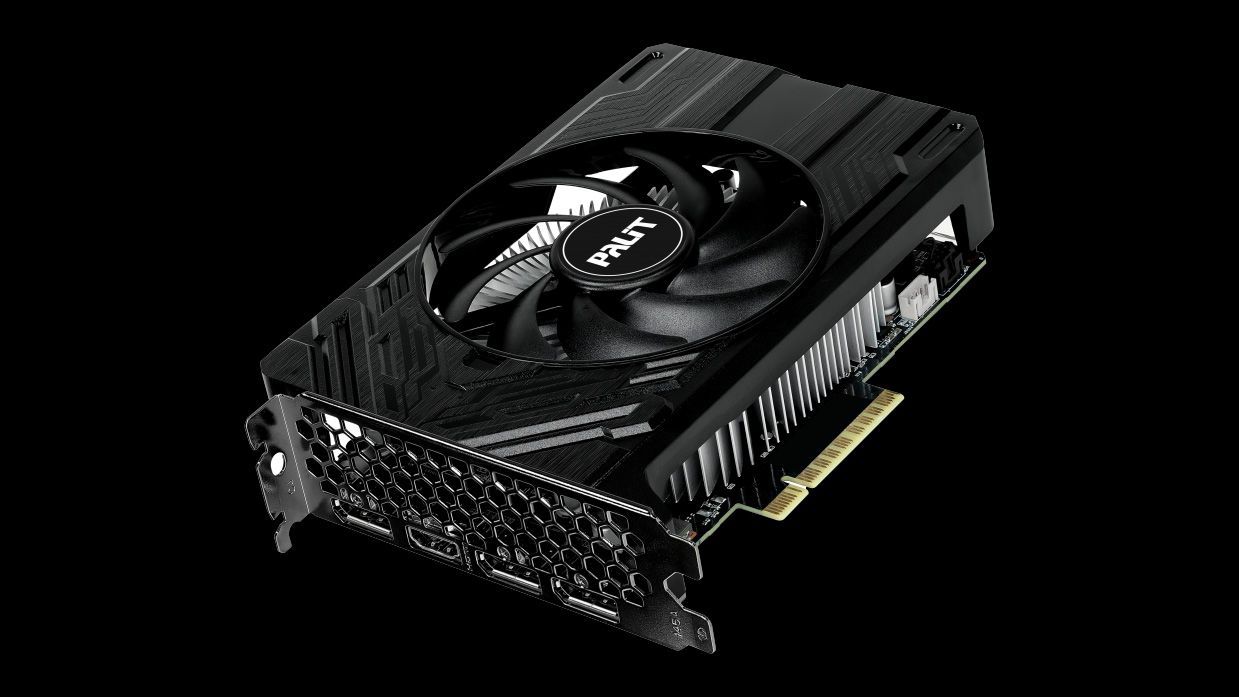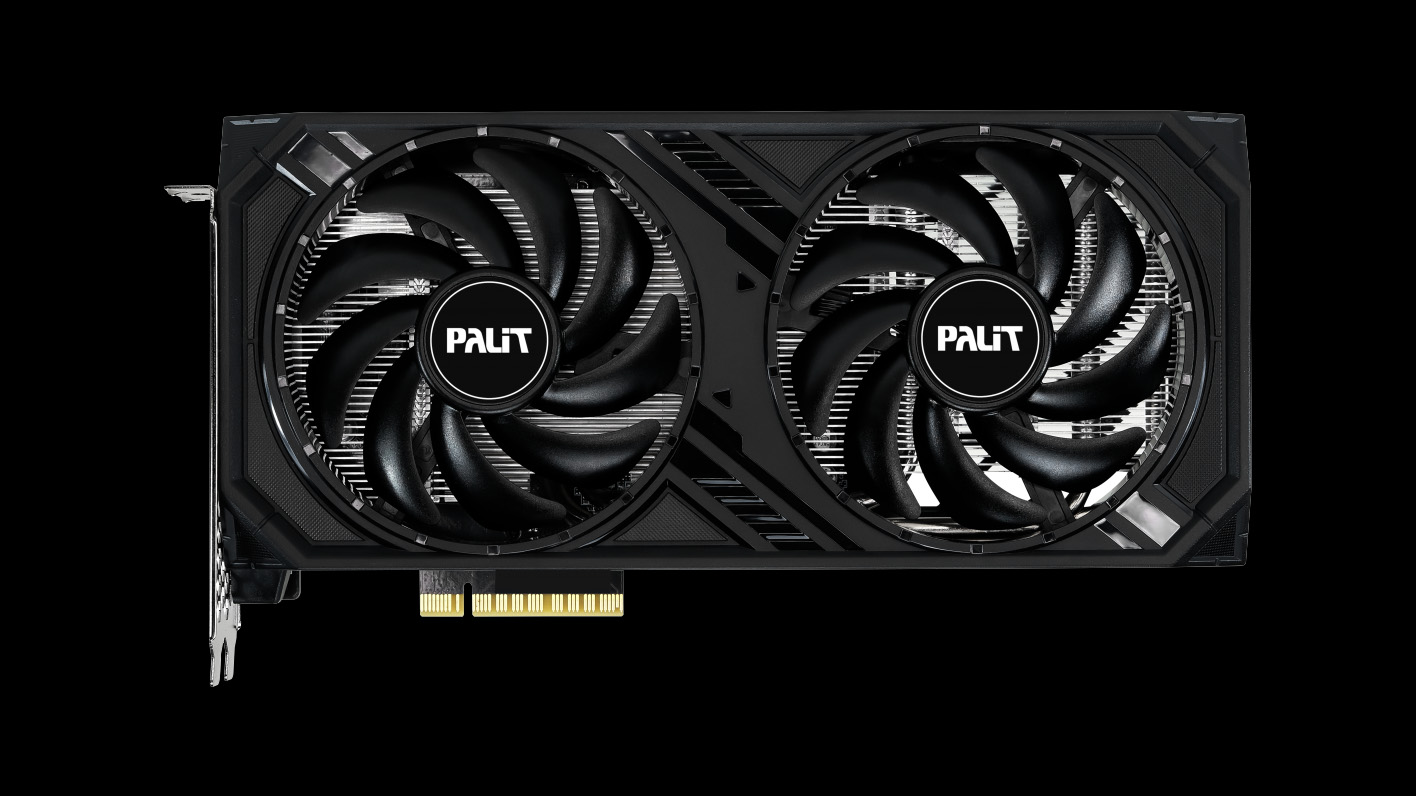Palit Cuts RTX 4060 PCIe Connector in Half

A tweet from @fpsojisan_yt reveals that Palit is allegedly cutting the physical size of its PCIe connector in half for its RTX 4060 graphics cards. This change makes some sense as the RTX 4060 is only wired to use eight lanes of PCIe connectivity. At the same time, while the RTX 4060 ranks among the best graphics cards, it's mostly by virtue of being the least expensive Ada Lovelace architecture GPU from Nvidia.
All the RTX 4060 cards we're aware of have so far come with an x16 physical PCIe connector, even though the AD107 GPU (and AD106 on the RTX 4060 Ti) only uses eight lanes of connectivity. The remaining eight lanes are not electrically connected and are there more for stability. These cards from Palit are the first time we've seen an RTX 4060 with a cut down PCIe connector, and in fact it's a rare bird of a graphics card that has anything other than an x16 physical connector — even the RX 6500 XT and RX 6400, which only use four electrical lanes, usually have x16 connectors.
The neutered PCIe x8 interface is generally used to reduce manufacturing costs and reduce the physical size of the actual chip. External interfaces generally don't scale at all with newer process nodes, so dropping from 16 to eight or even four lanes can save on die size. This can be useful on lower-end GPUs like the 4060, since most graphics cards don't really take full advantage of an x16 interface, especially at Gen 4 speeds.
物理的に×8なってるやん pic.twitter.com/FAIedoLyLxJuly 13, 2023
The thing is, while changing the physical connector to an x8 connector might make the cards more flexible in that they can now fit in x8 motherboard slots, in practice there are almost no consumer motherboards that provide x8 slots. Even when a slot only has four or eight lanes of connectivity, nearly all motherboards still opt to provide a physical x16 slot. There are more workstation and server boards with x8 slots, but those likely wouldn't be using RTX 4060 cards in the first place.
In (very) rare cases, the x8 connector of these cards could be beneficial for users installing the RTX 4060 as a secondary graphics card inside their machine. There may also be some older PCs that only had an x8 physical slot... maybe. But even Micro-ATX and often mini-ITX motherboards still provide at least one physical x16 slot.
For consumer use, the shorter x8 connector could compromise stability as well. Not that the RTX 4060 needs the massive coolers that we've seen on GPUs like the RTX 4090 and 4080, but the cards are still long enough that providing an x16 connection would provide more support near the end of the card. So, over time, these Palit cards might be slightly more prone to sag.
The benefits of an x8 connector are very niche for most consumers and gamers. Nearly all modern desktop motherboards feature full-sized x16 slots, with the primary slot linked directly to the CPU to improve latency and speed. Putting an RTX 4060 into any slot not connected directly to the CPU could reduce performance, and PCIe 3.0 or even 2.0 slots on older PCs would likewise impact performance. But if you happen to have a system that only has a PCIe x8 slot (let us know in the comments what board you're using!), Palit's RTX 4060 cards might be useful.
Even though most users will never benefit from a physical 8-lane connector, Palit's unique design will give niche users a rare opportunity to install the RTX 4060 in an x8 slot should they need it.
Get Tom's Hardware's best news and in-depth reviews, straight to your inbox.

Aaron Klotz is a contributing writer for Tom’s Hardware, covering news related to computer hardware such as CPUs, and graphics cards.
-
bit_user More cards should do this. Server boards often have x8 slots that are mechanically x8. It can sometimes be useful to put a real GPU in them, but you rarely need the fastest.Reply
It'd be even more useful if the x4 GPUs (looking at you: RX 6400, RX 6500 XT) would be mechanically x4, because it's pretty common to find x4 slots even on consumer boards.
The shorter the connector, the less of an issue that should really be.tennis2 said:Additional problem: No locking tab. -
artk2219 Reply
Makes sense, the locking tab is mainly due to the length of the x16 slot connector causing the potential for the rear of the card to get knocked out of the socket due to a lack of retention on the part away from where its secured to the back of the case. The shorter connector means its less likely to happen since the connector should be held down closer to where its secured to the back of the case. Being honest, I've rarely seen the lack of a locking tab cause an issue with an X16 card, especially if its actually secured with screws instead of a toolless retention system. Not that toolless systems are inherently bad, its just many of the ones ive seen have held things much less securely than a couple of screws would have.bit_user said:More cards should do this. Server boards often have x8 slots that are mechanically x8. It can sometimes be useful to put a real GPU in them, but you rarely need the fastest.
It'd be even more useful if the x4 GPUs (looking at you: RX 6400, RX 6500 XT) would be mechanically x4, because it's pretty common to find x4 slots even on consumer boards.
The shorter the connector, the less of an issue that should really be. -
cyrusfox Maybe a card to get when it comes down further for small builds, finally replace a GTX 1080? Too bad about the memory bandwidth.Reply -
hotaru251 Reply
if ur running a 1080 just go for AMD's as ur after rasterized performance mainly and they are much better $ per frame in that regard.cyrusfox said:Maybe a card to get when it comes down further for small builds, finally replace a GTX 1080? -
newtechldtech give it some time and the 16 lanes slot will disappear ... the 8 lanes bandwidth is enough ... also using only 8 lanes slots will free more space on the motherboard ... s o expect MicroATX motherboards to be the standard in few yearsReply -
bit_user Reply
Certainly not before PCIe 5.0 dGPUs hit the market.newtechldtech said:give it some time and the 16 lanes slot will disappear
TechPowerUp is routinely testing PCIe scaling, and tend to find that some games (out of the 25 or so they test) benefit by as much as 10% from PCIe 4.0 x16 vs. x8. That should only increase, as GPUs get faster. So, I only see an across-the-board cut to x8 making sense if you also increase the speed to PCIe 5.0.newtechldtech said:... the 8 lanes bandwidth is enough ...
However, I could see entry-level motherboards maybe moving towards electrically x8 slots, in the nearer term. Especially now that an increasing number of dGPUs are only electrically x8.
No, Micro-ATX only cuts the number of slots. So, making them shorter is irrelevant.newtechldtech said:also using only 8 lanes slots will free more space on the motherboard ... s o expect MicroATX motherboards to be the standard in few years
-
neojack I have seen people buing Intel's A380 Gpus, and dedicate them to real-time encoding. that's a niche use-case where a 8x slot might actually drive more sales.Reply
But as a main GPU, i don't know. maybe some miniature motherboard in china use a main 8x slot ?
